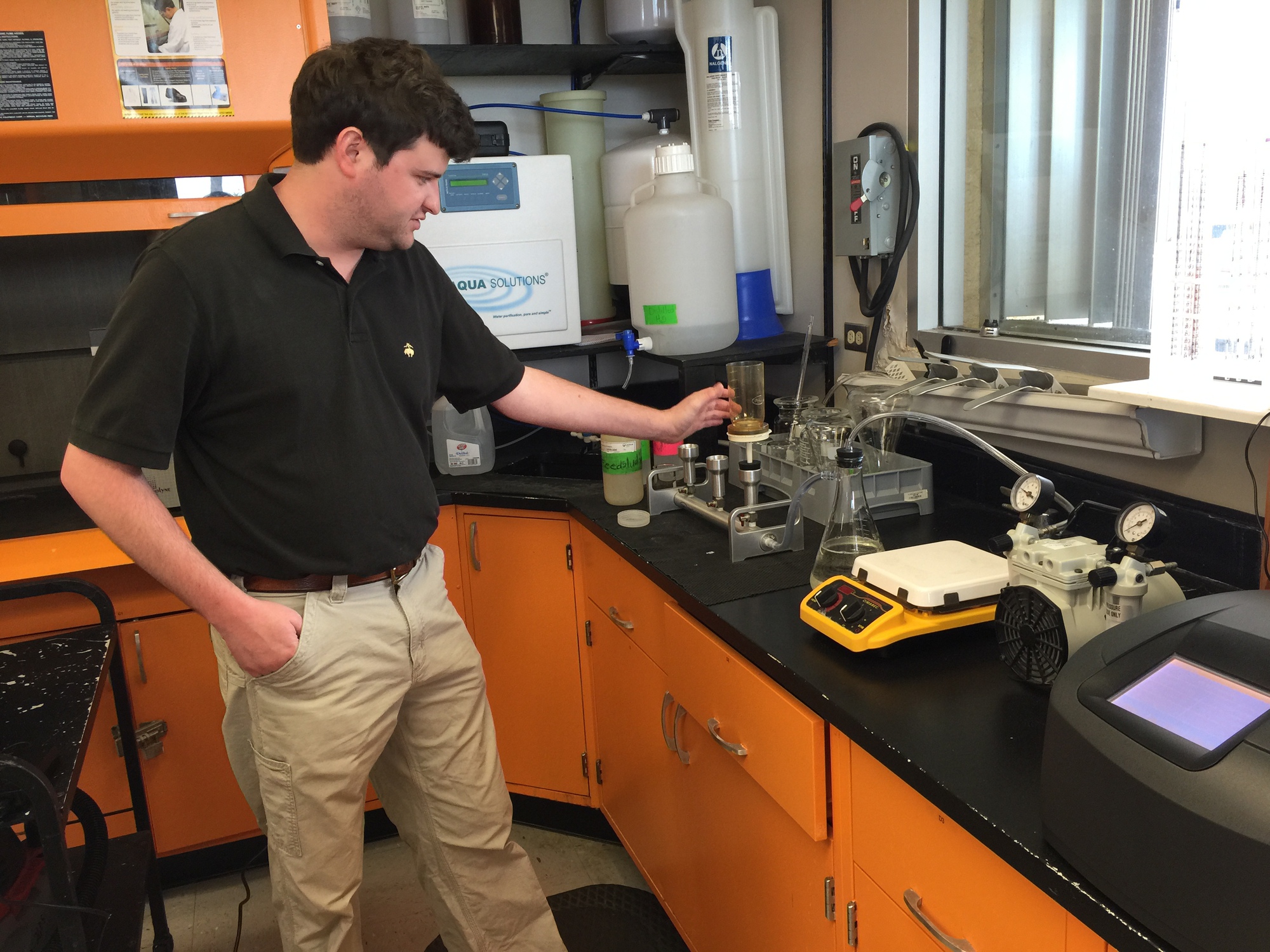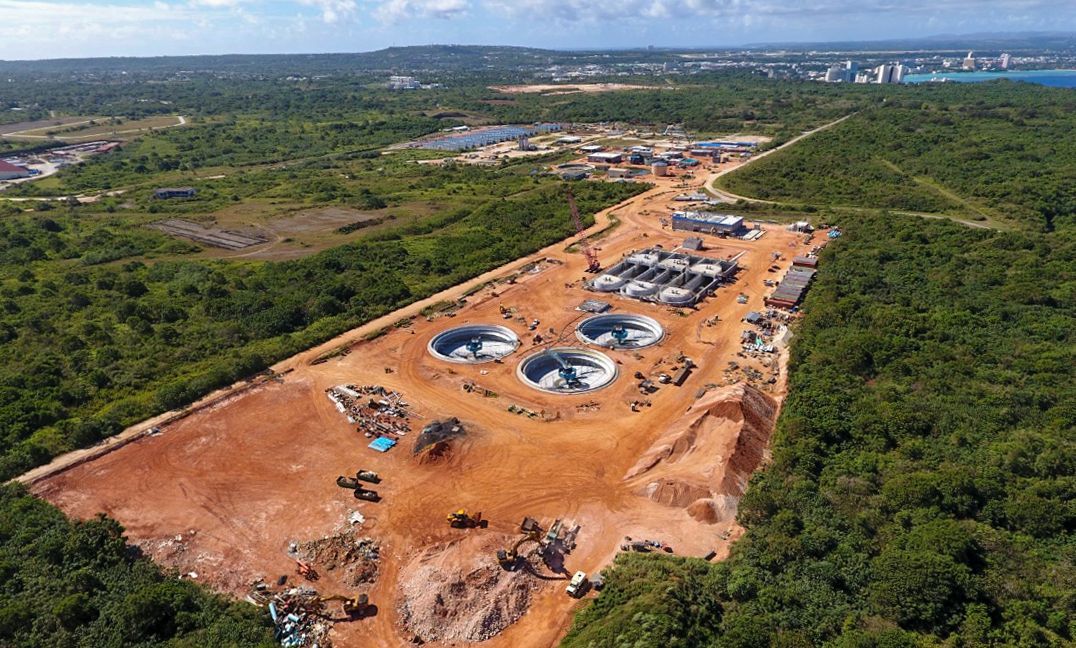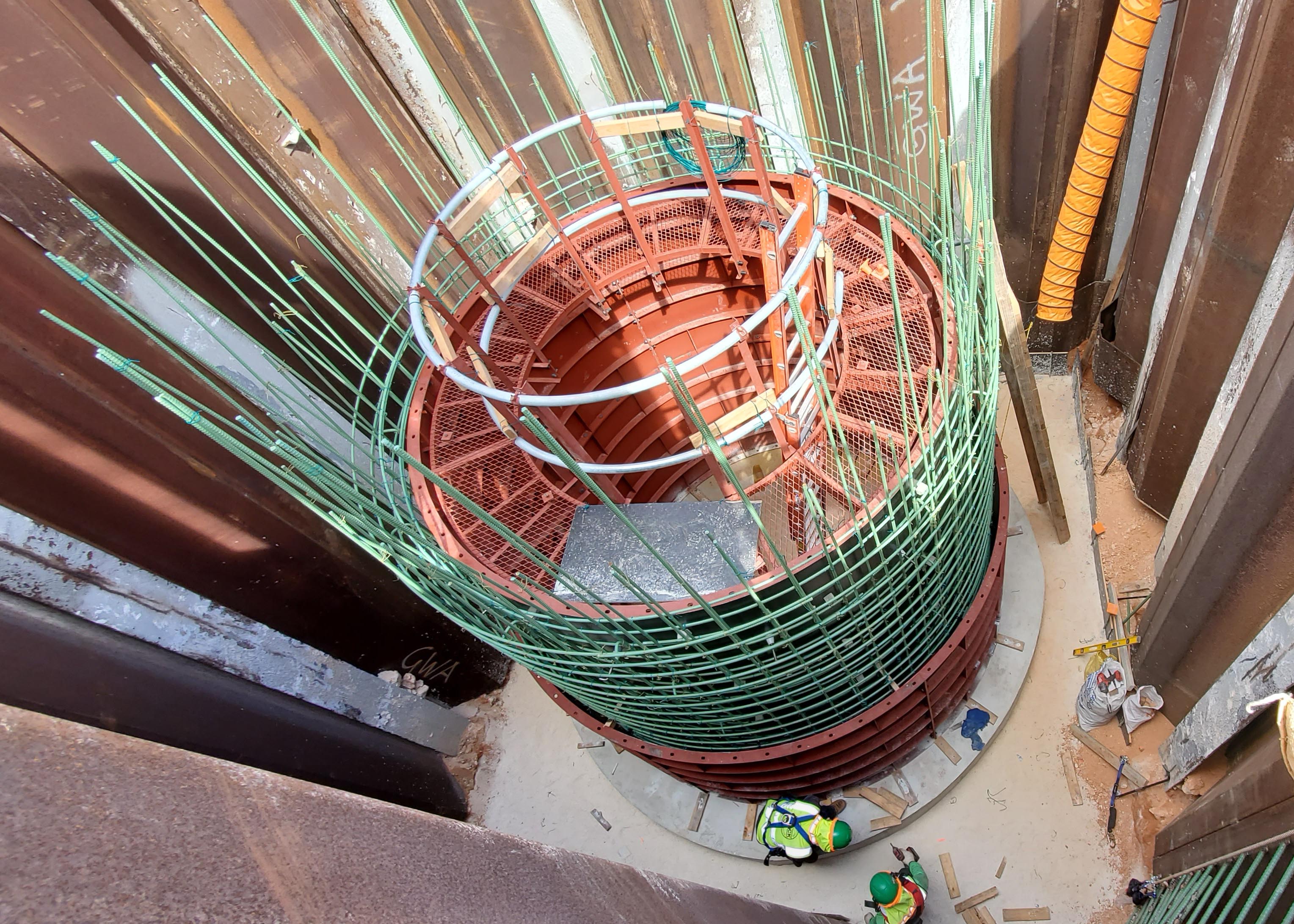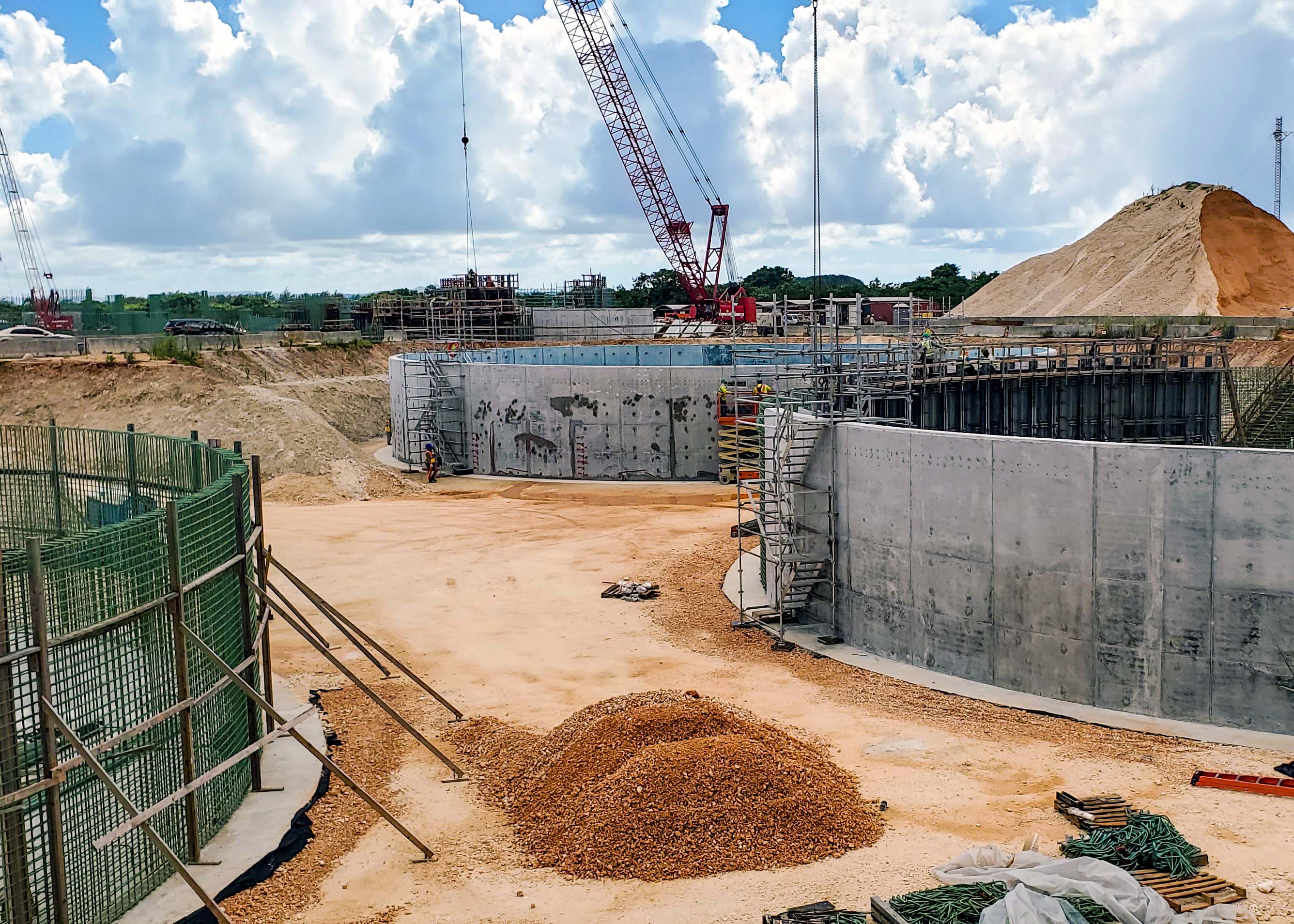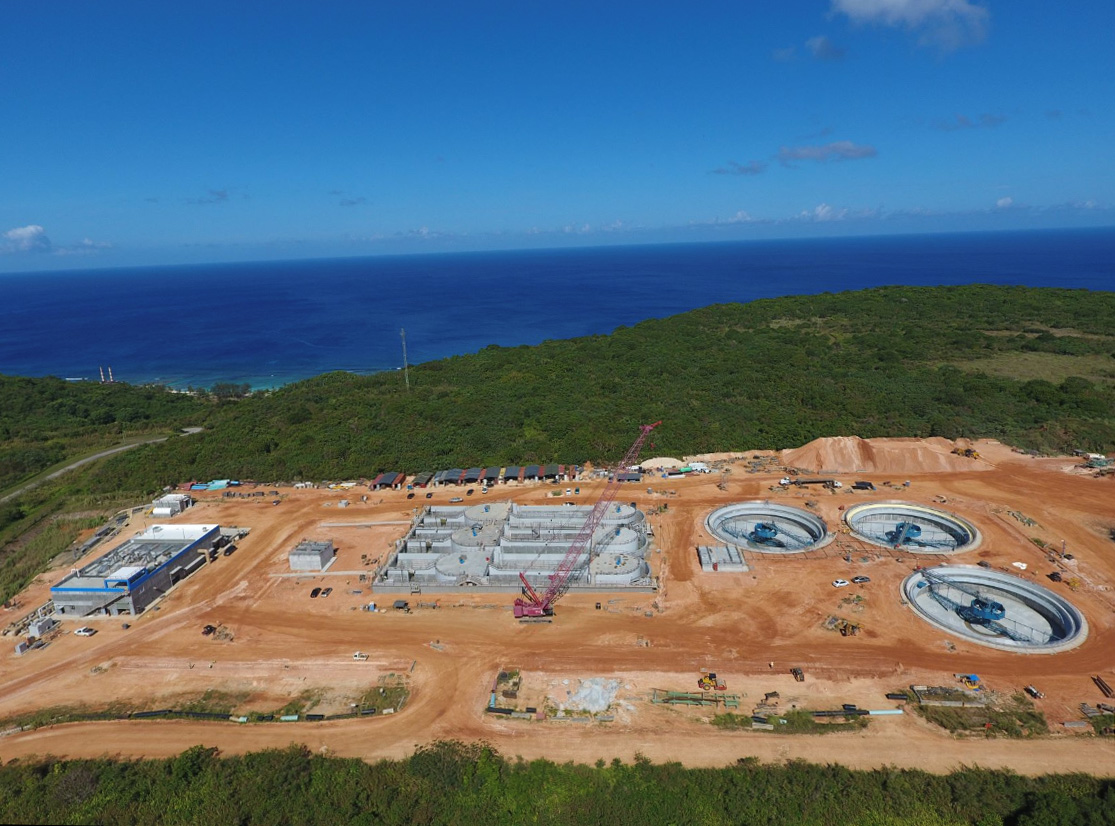A U.S. territory since 1898, the island of Guam is home to approximately 170,000 residents, including 12,000 U.S. military members and their families. To meet the needs of recent population growth in the island’s northern district, as well as the upcoming relocation of 5,000 deployed U.S. Marines from Japan to Guam’s new military base, Guam Waterworks Authority (GWA) needed to increase their wastewater capacity and update their treatment process. Additionally, they also needed to comply with requirements from the U.S. Environmental Protection Agency (EPA).
Working as a sub-consultant to local engineering firm Duenas, Camacho and Associates (DCA) as part of a traditional design-bid-build effort funded by the U.S. Department of Defense (DoD), Gresham Smith overcame Guam’s remote location and tropical climate, as well as a complex site and the challenge of keeping the existing plant operational during construction, to engineer an expansion to the Northern District Wastewater Treatment Plant (NDWWTP) that increases the plant’s capacity and treatment abilities. The upgrade project is the largest capital improvement project in GWA history.
acre greenfield site
new oxidation ditches
new secondary clarifiers
Studying Up
In 2018, the Gresham Smith team began the project by conducting a wastewater characterization study of the influent waste stream, with a focus on the plant’s liquid stream. The goal of the study was to determine the constituent concentrations in the influent wastewater, which would be used in process modeling, process selection and equipment sizing. Engineers also collected and analyzed plant operating data, which, together with the study data, was used to build a dynamic process model simulation to evaluate treatment alternatives for technical feasibility and cost effectiveness.Designing a Smart Site
Once a design solution was selected, the project team evaluated the dedicated project site—a 17-acre greenfield site 300 feet above the Philippine Sea—and prepared a site layout that would better accommodate the necessary treatment processes. To work with the site’s slope, Gresham Smith selected a layout that accommodated locating the headworks in the southern portion of the expansion site, where the existing elevation was lowest and sloped upwards toward the north end. This allowed the headworks to be constructed at grade with the screening system located above the first floor, keeping the hydraulic profile low, eliminating the need for screen conveyor systems and accommodating a gravity drop to dumpsters below. This solution also significantly reduced excavation requirements, which was important since the site was comprised of volcanic deposits.
Reduce, Reuse, Recycle
To save time and budget, as well as reduce the need for labor since workforce was in short supply, Gresham Smith took a combination approach, repurposing existing structures alongside new construction. Engineers used qualitative factors—benefits to overall treatment process, benefits to construction cost or schedule, and potential future benefits—to evaluate the plant’s existing structures to determine viability for re-use.After identifying which structures could be repurposed, we designed renovations to the existing Southern Link influent pump station and repurposed the existing headworks facility for a new pump station to transport flow to the new headworks facility. The existing force main from the Southern Link pump station was also reused and extended to service the new headworks. The Chlorine contact basin was repurposed to serve as the ultraviolet (UV) disinfection chamber, and one of the primary clarifiers and sludge pumping building were repurposed to house blowers and store waste activated sludge.
We also designed new structures, including a new influent pump station and force main to handle the Route 3 Interceptor sewer flow. The new headworks includes influent flow measuring, and new fine screens and vortex grit removal structures provide preliminary treatment. There are three pre-treatment trains, which operate individually for a set duration before alternating to allow for even wear across the equipment. A passive weir gate and manual screen provide flood protection, while a two-stage odor control process reduces the impact from potential raw sewage odors on neighboring communities.
Benefits of Biological Treatment
After evaluating three biological treatment processes—conventional activated sludge, oxidation ditch and sequencing batch reactor—the team determined the oxidation ditch was the preferred solution to meet performance and operations needs. To further refine the treatment process, engineers used BioWin process models to analyze a variety of influent loading scenarios and confirmed that the oxidation ditch will produce effluent consistent with the requirements of the plant’s NDPES discharge permit.Three new companion secondary clarifiers following the oxidation ditches further remove solids from the wastewater before it undergoes UV disinfection, which will use UV light to inactivate target pathogens. With an eye on the future, the plant was also designed with the space and hydraulics to accommodate chemical phosphorus removal with coagulation and tertiary filtration.
Setting the Standard
As only the third wastewater treatment plant with a secondary treatment system on the island of Guam, this project sets the standard for overcoming climate and site constraints and adhering to stringent design requirements set by the U.S. government to deliver an operationally efficient design solution that benefits residents of Guam. The upgraded treatment processes, particularly the biological secondary treatment and UV disinfection system, will improve the quality of the effluent discharged to the Philippine Sea, reducing the impacts to coral reefs and protecting the natural resources vital to Guam’s economy.Project Contact
Our team develops creative solutions for the world's toughest infrastructure problems.
Learn more about our Engineering expertise.

